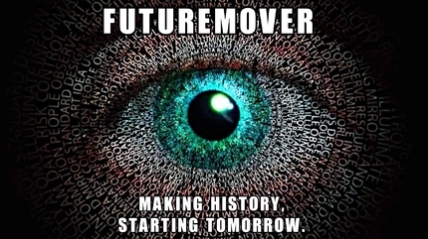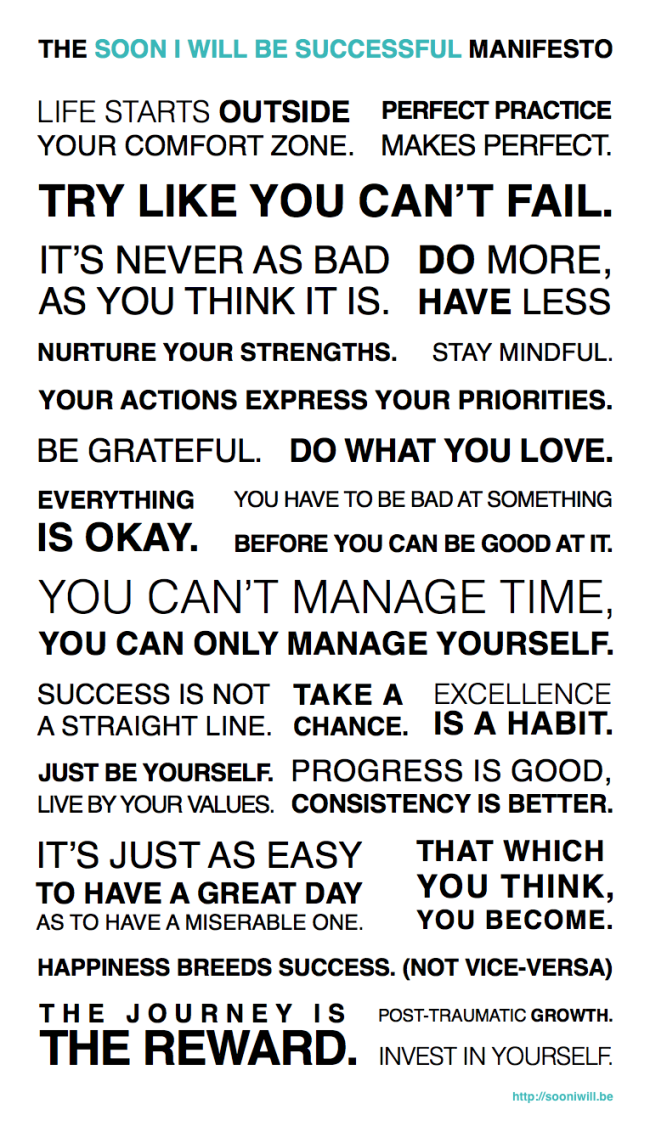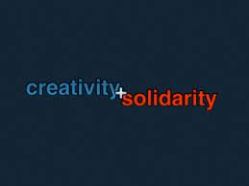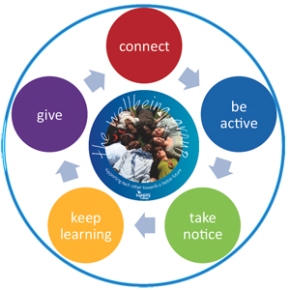WARRIOR DOWN PRACTITIONER MANUAL
Warrior down projects operate in an unusual environment of being both service provider and host of an emerging recovery community and this dual responsibility requires careful management, not least in maintaining appropriate boundaries in how we respond to a ‘warrior down’ or a request for help from a significant other. It’s not our place as a provider to outreach someone who hasn’t asked for help, but as a recovery community we can adopt the ‘warrior down’ approach to reach out into the community and provide assertive support.
What do I mean by this? Adopted from a peer-to-peer programme originally designed to provide support and community referrals for Native Americans in recovery, ‘warrior down’ is the cry to signify that a warrior has been wounded or incapacitated and needs help. The warrior down initiative creates a response team to provide support and finds the resources to get that person back into their recovery process.
Recovery isn’t just staying sober – it’s a way of experiencing life through new eyes, new thoughts, and a new spirit. Re-establishing one’s life following treatment for alcohol or substance abuse or incarceration requires a community effort. Without the support of a knowledgeable family and community, many who try to return to healthy, productive lives find themselves frustrated by the need for a job, training, education, housing, mental health care, medical support or connections with others who value sobriety and healthy behaviours.
Throughout the evolution of the UK recovery movement there has been close liaison with colleagues and friends in the USA, and it was in 2011 that Phil Valentine came to the UK and told us about the White Bison Warrior Down Program. The whole warrior down ethos and philosophy had an immediate resonance to those in recovery communities in the north of England, where small but influential groups of addicts have come together to create abstinence-based recovery communities.
They have done this most obviously in NA and AA – many got there via prison or simply stopped taking methadone and dropped out of treatment. It’s very rare to find people in abstinence-based recovery who got there via community methadone treatment and, similarly, the rooms of Alcoholics Anonymous have facilitated peoples’ recovery and been the driver for them to reach out to those who are still in battle.
Given the numbers of people entering recovery it was only a matter of time before people started to relapse, and we asked ourselves how we should respond. This really is brand new territory. Treatment professionals are not used to assertively reaching out to people who relapse – people in 12-step fellowships may respond with comments like ‘God or drink and drugs will bring them back – one way or the other’, but neither standard treatment assertive outreach or benign 12-step fellowship felt like the right thing to do.
The people who had relapsed had become our friends and allies. They were almost family, and you don’t leave one of your own out there on the battlefield, in the madness of addiction, to die. You go and get them and do everything you can to get that warrior back into their recovery process.
Warrior down response teams are driven by ethical governance as opposed to clinical governance, and they work across geographical boundaries. Recovery communities have been utilising this approach for years. The approach is made up of informal coalitions of work colleagues, treatment professionals, friends and family members, as well as those supporting family members like Loved Ones Unite and Al-anon, faith-based group members and peers in recovery. They operate inside the recovery system, but outside of the treatment system. They respond to anyone who is in need, at any stage of their journey.
Many recovery slogans and clichés have become part of people’s lived reality. People in recovery know that ‘you alone can do it, but you cannot do it alone’, because they have tried it on their own and failed time and time again. They know that ‘I can’t but we can’, they have been that addict or that alcoholic who has sat on their own thinking about recovery while ordering two bags of brown and one of white. Then there is the addict whose thinking turns to drinking: ‘I’ve never really had a problem with alcohol, it was just gear and crack – I’m sure I’ll be OK having a drink.’ These experiences prove that an addict on their own is indeed behind enemy lines – rhetoric soon becomes reality when you realise that we really are in this together.
WARRIOR DOWN RELAPSE PREVENTION PROGRAM.
PURPOSE: The Warrior down program is set out to provide a relapse prevention and recovery support group for peers who are completing treatment and returning to their community after a period of addiction or incarceration.. It is also set up to provide support for those already on that journey who may be struggling with life on life’s. The principles are based in the altruistic movement that is evident within already established recovery communities and the core value is the therapeutic value of one addict supporting another on their respective journeys. This program has been adopted, quite successfully, by recovery communities up and down the country, peer support groups and recovery champions.
WHAT IS WARRIOR DOWN: Warrior down is the cry used to signify that a warrior has been wounded or incapacitated in some way and needs help. The warrior down program creates a response team that provides the support and finds resources to get that warrior back into the recovery process. This is a peer to peer program that is designed to equip individuals with recovery support and community integration techniques to support a sustainable and successful recovery journey that accepts relapse as part of that journey and puts protocol in place to support that part of the recovery journey. Recovery is not just about staying sober or drug free. It’s about seeing life through new eyes, new thoughts, and a new spirit. Re-establishing ones life following the absence of substances or following a period of incarceration requires a community effort. Without support from a strong knowledgeable social network, peers, family, professionals, etc. Many who try to return to healthy, productive lives find themselves frustrated by the need for employment, training, education, housing, transport, mena tal health care, medical health care, social services, spiritual and cultural support or connections. A positive connection with a like minded individuals, who value their new found way of life, within the community, who has bee n through the stages of recovery can make all the difference and show that recovery is possible and achievable.
CULTURAL AND SPIRITUAL SUPPORT FOR RECOVERY AND RE-INTEGRATION: The original warrior down program has its origins in the Native American culture and some of the principles are deeply spiritual and cultural in practice. Original healing process included healing circles and traditional ceremonies. Ceremonial activities have a distinctly spiritual focus, and the incorporation of intergenerational activities that include both elders and children. The involvement of family and significant others in the process is an integral and important part of the process. It is recognised as being essential for the well-being of all involved in the process, which inevitably has an effect in the overall community around those involved in the re-integration process. The teachings of the Elders and the Clan mothers provided wisdom and quidance. Unfortunately some of those that we come in contact with have no family support or significant others in their lives for numerous reasons and this can be a major barrier to re-integration in some areas. Those who are isolated in this way may benefit from having a mentor, guide, or sponsor as such to provide the same guidance and wisdom around issues that may seem daunting and overwhelming to an individual at any given stage of their recovery journey. Th spiritual pathways provide meaning and purpose but again are a misunderstood concept in that they are not religious in content but can be seen to be in their delivery in certain mutual aid environments. A spiritual act is simply an act done in support of a fellow warrior, such as going for a coffee, meeting up for a chat, helping someone across the road. Cultural activities create a social and emotional foundation for reconnecting and re-establishing a sense of belonging and identity. Most individuals who are on the recovery journey are driven by a spiritual ‘need’ to help others and have a desire to share their journeys with other recovering individuals or those that have that same desire for change. This promotes and empowers re-integration into the community and supports the individual to sustain a balanced emotional, mental, physical and spiritual wellbeing throughout their journey.
RE-ENTRY BEGINS IN THE TREATMENT ENVIRONMENT BUT MUST BE RECOGNISED AS JUST THAT, A BEGINNING. THIS IS MERELY THE START OF THE JOURNEY WHERE A SOLID FOUNDATION CAN BE PUT IN PLACE FOR THE INDIVIDUAL TO BUILD ON. STRUCTURED RECOGNISED TREATMENT OPTIONS ARE NOT TH EONLY WAY OF RE-ENTRY AND THERE HAS TO BE RECOGNITION GIVEN HERE TO OTHER FORMS OF MUTUAL AID AND PEER SUPPORT AS A VALID AND EFFECTIVE WAY OF INTRODUCING AN INDIVIDUAL TO THE EARLY STAGES OF RECOVERY.
PHASE 1: PROGRAMS FOR RE-INTEGRATION WITHIN THE TREATMENT SETTING.
(medicine wheel and possible 12 step curriculum)
The 12 step recovery program is specifically designed to meet the spiritual and cultural needs of member s of the community who are entering the recovery journey and also offers support for those on that journey. There is already a established community that has been successful for over 70 years. It has proven to be successful in its approach and is by far the most recognised mutual aid support network within our communities, however, this is not for everyone and there are other mutual aid options available to those who find the 12 step program is not for them. Of these other forms of mutual aid there is SMART Recovery which is another growing community nationally and is rapidly becoming known as the ‘alternative’ to 12 step. THE SMART program is a peer led initiative that consists of a series of tools that are based on tools used in CBT, MI and REBT counselling. The SMART program is a four point program that consists of…
1: Enhancing and maintaining motivation to abstain.
2: Coping with urges.
3: Managing thoughts, feelings and behaviours through effective problem solving.
4: Balancing momentary and enduring satisfactions to achieve lifestyle balance.
SMART Recovery is different in that it advocates choice and leaves the individual the freedom to choose what works best for them, providing a number of different options. SMART aims to support the individual towards achieving a balanced and healthy lifestyle and works towards a ‘graduation’ whereby the individual then moves into the recovery community. This is different from the 12 step principle in that the 12 step program advocates for lifelong membership and commitment. Some of the specific tools used in the SMART program include….
CHANGE PLAN WORKSHEET: This is a chart in which you list your goals and how you will attain them, the ways in which you will overcome obstacles and challenges, etc. The process of completing a change plan worksheet clarifies both your goals and the potential roadblocks to attaining them.
COST BENEFIT ANALYSIS: This tool is especially useful for increasing motivation to abstain from addictive behaviour.
THE ABC’s OF REBT: This tool from Rational Emotive Behavioural Therapy, founded by Albert Ellis, helps to identify irrational beliefs, which in turn lead to poor consequences.
DISARM: Destructive Imagery and Self-talk Awareness and Refusal Method, This tool exposes the thoughts and images which urge us to pursue our addiction as inaccuracies, excuses and rationalisations.
BRAINSTORMING: This technique is often used in face to face and online meetings. A participant introduces a question or problem. Other participants then offer ideas or suggestions without judgement.
ROLE PLAYING / REHEARSING: This tool is used mostly in group environment. An example of which could be….rehearsing how to avoid addictive behaviour in a chosen situation where there is a high risk or medium risk. Group members would play various roles in the situation and play out the role.
Other possible forms of mutual aid that can be looked at and explored during the initial first phase are Therapeutic communities.. These are community approaches that are based on 14 key competencies highlighted by both David Kressel and George De Leon.
Other more specialised approaches and ideas for group environment work could be fatherhood initiatives, parental guidance courses….etc..
PHASE 2: RE-INTEGRATION CONTINUES IN THE TRANSITION PERIOD FROM TREATMENT TO COMMUNITY (CIRCLES OF RECOVERY, 12 STEP, SMART, THERAPEUTIC COMMUNITY INVOLVEMENT)
Again the need for mutual aid is paramount within this setting and should by this time be established and instrumental in the next phase of development. By this time the individual should have a good idea of where they want to be and which form of mutual aid support best suits their needs….and wants to support them in their new setting. This of course may change as the individual moves on with their recovery and their understanding and needs and wants evolve. This phase of the recovery journey is facilitated by ‘firestarters’. Firestarters are peers and recovery champions who are established in the community and available to support an individual through mentorship, coaching, sponsoring and other various ways in which the recovery journey can be enhanced and supported. Part of the Warrior down concept seeks to support an individual into securing housing, employment, benefit support, social support, emotional support, and general support with etc. and members of the response team should be well versed and trained in these. General lifeskills and everyday living skills. There are a number of individuals in the community who are available to sponsor people and there are also a handful of individuals already available in the community who are in a position to support this by means of a relatively new concept known as recovery coaching. A positive, empowering and innovative approach to supporting members of the community in sustaining their journeys.
RECOVERY COACHING: Recovery coaching is a form of strengths-based support for persons with addictions or in recovery from alcohol, other drugs, codependency, or other addictive behaviors. Recovery coaches work with persons with active addictions as well as persons already in recovery. Recovery coaches are helpful for making decisions about what to do with your life and the part your addiction or recovery plays. Recovery coaches help clients find ways to stop addiction (abstinence), or reduce harm associated with addictive behaviors. Recovery coaches can help a client find resources for harm reduction, detox, treatment, family support and education, local or online support groups; or help a client create a change plan to recover on their own.
Recovery coaches do not offer primary treatment for addiction, do not diagnose, and are not associated with any particular method or means of recovery. Recovery coaches support any positive change, helping persons coming home from treatment to avoid relapse, build community support for recovery, or work on life goals not related to addiction such as relationships, work, education etc. Recovery coaching is action oriented with an emphasis on improving present life and reaching goals for the future.
Recovery coaching is unlike most therapy because coaches do not address the past, do not work to heal trauma, and there is little emphasis on feelings. Recovery coaches are unlike licensed addiction counselors in that coaches are non-clinical and do not diagnose or treat addiction or any mental health issues.
SPONSORSHIP: Sponsors are people who have worked through the Twelve Steps and are available to help others in their recovery. If you want to work the steps as outlined in the book Alcoholics Anonymous, a sponsor can offer guidance based on their personal experience. However, it is important to mention that your recovery does not depend on having a sponsor. This program will take you on a personal spiritual path, and sponsors are merely messengers of the experience, strength, and hope that this program offers.
While the book Alcoholics Anonymous provides a description of how to work the Twelve Steps, a sponsor can offer specific assignments that help the process along. Moreover, a sponsor’s personal experience can assist us to confront problems, and move through them to change and growth.
You are ready to be sponsored when you have recognized a desperate need for help and a willingness to go to any lengths to recover. A prospective sponsor will suggest that you read the book Alcoholics Anonymous, and may make other suggestions for you to follow before you both decide whether to work together.
There are many benefits to being sponsored. Actively working with someone else offers you a chance to engage in a relationship based in honesty–an acquired skill for many of us with this illness. It is also an important venue to expose the illness and explore spiritual remedies. Usually we have blind spots. A sponsor who practices loving confrontation can help us break through these and gain a deeper self-understanding. Often people find that they are better able to help others because of the example provided by their own sponsor.
MENTORING: Mentorship is a personal development relationship in which a more experienced or more knowledgeable person helps to guide a less experienced or less knowledgeable person through specific barriers that may arise during the recovery journey However, true mentoring is more than just answering occasional questions or providing ad hoc help. It is about an ongoing relationship of learning, dialog, and challenge.
“Mentoring” is a process that always involves communication and is relationship based, but its precise definition is elusive. One definition of the many that have been proposed, is….
Mentoring is a process for the informal transmission of knowledge, social capital,, and the psychosocial support perceived by the recipient as relevant to work, career, or professional development; mentoring entails informal communication, usually face-to-face and during a sustained period of time, between a person who is perceived to have greater relevant knowledge, wisdom, or experience (the mentor) and a person who is perceived to have less.
All of these together, and more, should be integral in the building and initiating of a warrior down response team and all have their own individual place within that team so that all avenues towards recovery are covered and all aspects of a fully inclusive recovery journey can be supported and maintained. All members of the recovery community Also members of the response team here would benefit massively from being involved in shadowing those in the professional capacity who specialise in potential barriers to recovery. ETE (Employment, Training, Education), Housing support, Benefits support, Debt management, etc. All resources should be looked at and made readily available to the community. This list will grow as the community grows. And ongoing training needs and support needs should be addressed and relevant training looked at in order to maintain a high level of support within the community.
PHASE 3: RETURNING TO THE HOME COMMUNITY.
Firestarters in local communities set up circles of recovery that are specifically designed to support those reintegrating into the community after a period of isolation, addiction, imprisonment..etc. This can cover a multitude of different aspects in an individuals recovery process and by this stage in the recovery journey those who have been introduced to this program will have become stable and secure in their recovery and in a position to carry their message to those who are beginning this journey. This in effect expands the support network and circle of recovering individuals to offer a wider and more supportive structure for supporting newcomers into the program. The nature of a therapeutic community is that the support of it’s members is never ending and not bound by any timescales. This support is ongoing and is always available to those who have come through the stages of the reintegration process and moved on successfully to become recognised and valued members of their community. Those who follow this process and successfully re-engage within their community can be a major inspiration to those walking into the program for the first time as are those walking into the program for the first time. Regular talks, discussions and events to bring members of the community together can be hosted to show that as members of an ever growing community recovery is possible and achievable. It really does work if you work it
FIRESTARTER TRAINING: This is designed to empower individuals to carry out all aspects of the Warrior down program. Suggested training could include Recovery coaching, sponsorship, mentor training, peer support training, Understanding the 12 steps, SMART recovery training, breaking free online training, boundaries and confidentiality, conflict resolution….the list is endless with regards to what training may be looked at and with the focus always on the individual’s journey the requirements of the group and indeed the community will be an ever changing, ever evolving natural progression process. This training should be designed to promote all different aspects of a full recovery agenda so that all options are explored and all members are fully armed with the facts in order to give a full and comprehensive package to suit the needs and wants of those they would support and in turn to keep them focused on their own recovery.
To summarise the process:
The first stage of the program is about finding your footing and the right pathway to suit you as an individual. Recovery is all about having choices and support in promoting those choices to enable a solid foundation on the journey you are about to embark on.
The second stage is about finding yourself and clearing the wreckage of your past in order to look at different coping mechanisms and strategies that would empower the early stages of your journey for a more positive and productive future.
Stage three is about strengthening your relationship with others and building a social network around you of likeminded people who are supportive, non-judgemental and positive in their approach to the community environment.
And finally stage four is about carrying this message and advocating for others by maintaining and continuing to move forward forging a path for others, leading by example.







